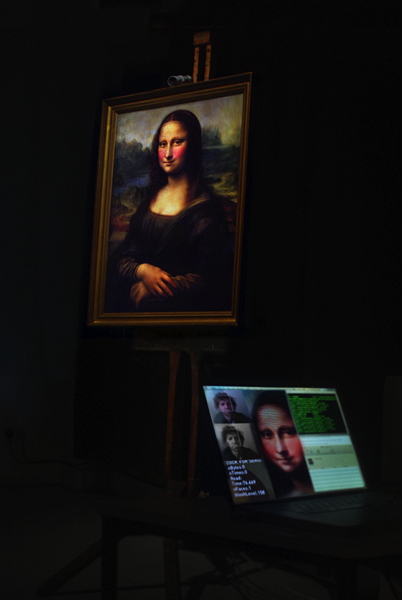solo projects
Blushing Mona Lisa
 Installation (detail)'Like Shadows', Phoenix, Brighton, 2011: Canvas inkjet print on easel, camera, lightbox,customized facial reckognition software, printouts
Installation (detail)'Like Shadows', Phoenix, Brighton, 2011: Canvas inkjet print on easel, camera, lightbox,customized facial reckognition software, printouts
Alongside the admittedly cheap reproduction of the portrait hangs an updating explanatory text. Combining visitor comments with articles discussing the impact of the Mona Lisa, auto-generative software forms a new description which at first glance pertains to authority, yet is ultimately meaningless.
With its famous ‘enigmatic smile’, the Mona Lisa became more famous as an object when it was stolen. Despite the disappearance of the object itself people flocked to gaze at the empty space, the lack of the gaze of the art object turned into an event in which the spectators themselves became the spectacle, the museum experience shifts, reversing the gaze onto the viewer.
No wonder she’s blushing.
Commissioned as part of "Like Shadows: A Celebration of Shyness"
Supported by the Engineering and Physical Sciences Research Council, as part of Supporting Shy Users in Pervasive Computing project, undertaken by the departments of Informatics and Sociology at The University of Sussex and by Brighton and Hove City Council. Curated by Helen Sloan.